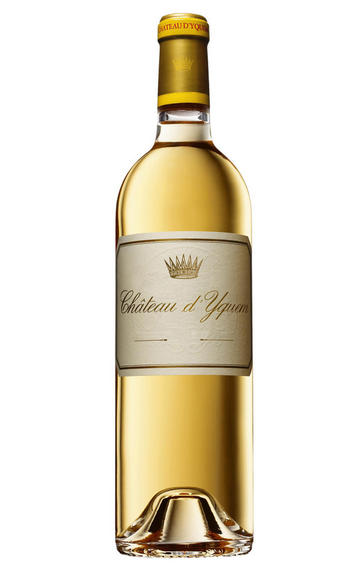
2016 Château d'Yquem, Sauternes, Bordeaux
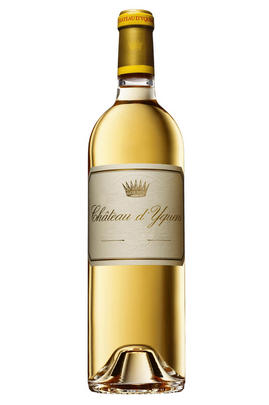
Critics reviews
The 2016 Yquem was picked from 27 September until 4 November after drought-like conditions in the summer. It has an attractive nose with white chocolate, chamomile and Chinese white tea infusing the honeyed fruit. Very well defined and focused with more cohesion than previous bottles.
The palate is medium-bodied with a viscous opening that demonstrates a little more weight than the 2015, a fine bead of acidity and touches of ginger and lemongrass enlivening the finish. I feel this has gained a bit more complexity in recent years. Tasted at the château.
Drink 2024 - 2060
Neal Martin, Vinous.com (April 2022)
Despite a rich botrytis character, this balances impact with delicacy. Clear citrus on the nose with a hint of flint and smoke, allowing the soft white flowers and lime blossom to steal up on you slowly. There are caramel notes through the mid-palate and great persistency, as ever. Extremely elegant.
This was the driest summer since 1898, and the harvest at Yquem lasted a full two months, from 4th September (for the dry white Y d'Yquem) through to 4th November for the final selection of botrytis berries.
The final yield is 20hl/ha, the highest in recent years against their average of 9hl/ha, with 40% going into the grand vin compared to 50% last year. 135g/l residual sugar and 3.9pH. 75% Sémillon and 25% Sauvignon Blanc.
Drink 2025 - 2050
Jane Anson, JaneAnson.com (April 2017)
Containing 135 grams per liter of residual sugar, the pale lemon-gold colored 2016 d'Yquem leaps from the glass with honeyed apricots, pineapple, green mango, crushed rocks, candied ginger, coriander seed and citrus peel with hints of orange blossom. The palate is very tightly wound, vibrant and refreshing with layer upon layer of minerals and spices, finishing with epic poise and persistence.
Drink 2024 - 2064
Lisa Perrotti-Brown, Wine Advocate (September 2019)
75% Sémillon, 25% Sauvignon Blanc. The driest summer Yquem has ever recorded, followed by a very cool autumn. Harvested over four tries between 29 September – 4 November, with the bulk of the crop picked in the last two weeks.
Broad and waxy with lovely lift and precision on the palate. It’s far from the most luscious or concentrated Yquem but it is recognisably waxy Yquem with medium intensity and sweetness and great length.
Drink 2025 - 2045
Jancis Robinson MW, JancisRobinson.com (September 2018)
A very classic Yquem. Breathtakingly wide spectrum of floral honey, exotic fruit (passion fruit, mango and pineapple), caramel and marzipan aromas. But none of this is a jot too much. In fact, the wine is extremely precise and finely nuanced. Wonderful freshness and textural complexity, in spite of the considerable concentration and extravagance. Very suave and sensual finish that goes on and on.
Drink or hold
James Suckling, JamesSuckling.com (December 2019)
The 2016 Chateau D’Yquem is pure magic, and dessert wines don’t get much better. Offering a pale gold colour as well as a blockbuster bouquet of honeyed tangerines, tart apricots, liquid rocks, white flowers, and honeysuckle, it hits the palate with full-bodied richness, an opulent texture, vibrant acidity, and, again, an incredible sense of minerality, despite having no shortage of sweetness or richness.
The 2016 is a classic blend of 75% Sémillon and 25% Sauvignon that hit 14.2% alcohol with 135 grams of residual sugar. It’s already complex and approachable yet will keep for 3-4 decades.
Drink 2019 - 2054
Jeb Dunnuck, JebDunnuck.com (June 2019)
About this WINE
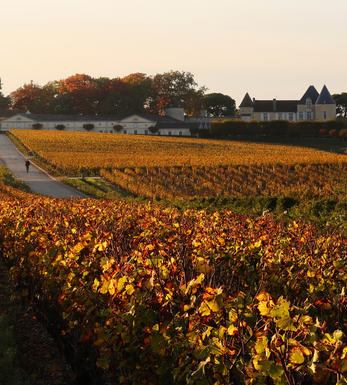
Château d’Yquem
Château d’Yquem is the leading estate in the Sauternes appellation on the Left Bank of Bordeaux. It has long been reputed for making one of the world’s great sweet wines. In the 1855 classification of Bordeaux wines, Yquem was given the lofty title of Premier Cru Supérieur – the sole property at that level. It sits comfortably among the First Growths of the Médoc and their equivalents on the Right Bank regarding its quality and prestige among wine collectors.
The estate has a noble history dating back to the 1590s. By 1711, it was owned by the Sauvage family, French aristocrats whose descendants would remain at the helm for almost three centuries. Yquem is now part of the Louis Vuitton Moët-Hennessy (LVMH) group, owned by Bernard Arnault, one of France’s wealthiest people.
Yquem is located in the heart of Sauternes, at the commune’s highest point and surrounded by many of the appellation’s other leading estates. The vineyard is planted to a majority of Sémillon, supported by Sauvignon Blanc. There are 113 hectares of vines, though only 100 hectares are used in any one vintage.
To make a bottle of Yquem depends on developing botrytis cinerea, the so-called “noble rot”, in the vineyard. Harvest involves up to 200 workers, passing through the vineyard up to 10 times to pick only those berries that have been infected with noble rot. This doesn’t happen uniformly, and it doesn’t happen every year. In some years, no Yquem is produced at all – as in 1964 or, most recently, 2012. Of this approach, President Pierre Lurton says: “It’s important to take a lot of risk. If you don’t take a risk, you don’t make Yquem.”
Today, Yquem is led by Pierre Lurton, its longtime President, along with Estate Manager Lorenzo Pasquini. The Cellar Master is Toni El Khawand, following the departure of Sandrine Garbay in 2022.
In addition to the sweet Sauternes produced here, there is also a dry white wine, Y (pronounced “ee-greck”).
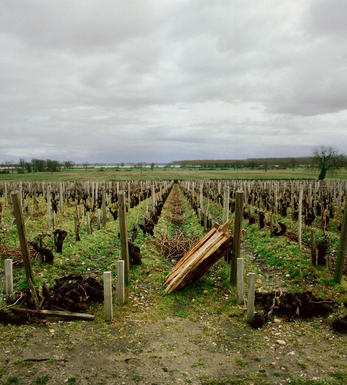
Sauternes
Sauternes is where arguably the world's finest sweet white wines are produced. The Sauternes appellation actually consists of five communes: Barsac, Preignac, Bommes, Fargues and Sauternes itself. Barsac is also an appellation in its own right.
Sauternes literally has an atmosphere different from any of the other major communes. At the southern tip of the Graves,close to the Garonne, not only is the land hillier and decidedly more bucolic but it also enjoys a specific mesoclimate of evening autumn mists which linger until well into the following day, unless burnt off by warm sunshine.
The mists are caused by the cool, spring-fed waters of the Ciron River meeting the warmer tidal Garonne, and the result is an ideal environment for the growth of the mould botrytis cinerea. When its arrival is felicitous, it feeds on the water in the ripe grapes, dehydrating them and leaving sweet, shriveled fruit.Other regions in Bordeaux (ie Cadillac, Loupiac) produce wines in a similar style from the same method, but none achieve the profundity and complexity of Sauternes.
Recommended Châteaux : Ch. D'Yquem, Ch. Climens (Barsac), Ch. Suduiraut, Ch. Rieussec, Sigalas- Rabaud, Ch. Coutet (Barsac), Ch. de Fargues, Ch. Lafaurie-Peyraguey, Ch. Doisy-Védrines (Barsac), Chateau Partarrieu, La Tour Blanche
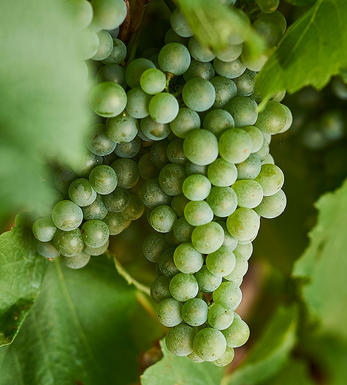
Sauvignon Blanc & Sémillon
The blend used for White Graves and Sauternes and rarely encountered outside France. In the great dry whites of Graves, Sauvignon Blanc tends to predominate in the blend, although properties such as Smith Haut Lafite use 100% Sauvignon Blanc while others such as Laville Haut Brion have as much as 60% Sémillon in their final blends. Sauvignon Blanc wines can lose their freshness and fruit after a couple of years in bottle - if blended with Sémillon, then the latter bolsters the wine when the initial fruit from the Sauvignon fades. Ultimately Sauvignon Blanc gives the wine its aroma and raciness while Sémillon gives it backbone and longevity.
In Sauternes, Sémillon is dominant, with Sauvignon Blanc playing a supporting role - it is generally harvested about 10 days before Sémillon and the botrytis concentrates its sweetness and dampens Sauvignon Blanc`s naturally pungent aroma. It contributes acidity, zip and freshness to Sauternes and is an important component of the blend.


Buying options
Add to wishlist
Description
The 2016 Yquem was picked from 27 September until 4 November after drought-like conditions in the summer. It has an attractive nose with white chocolate, chamomile and Chinese white tea infusing the honeyed fruit. Very well defined and focused with more cohesion than previous bottles.
The palate is medium-bodied with a viscous opening that demonstrates a little more weight than the 2015, a fine bead of acidity and touches of ginger and lemongrass enlivening the finish. I feel this has gained a bit more complexity in recent years. Tasted at the château.
Drink 2024 - 2060
Neal Martin, Vinous.com (April 2022)
wine at a glance
Delivery and quality guarantee